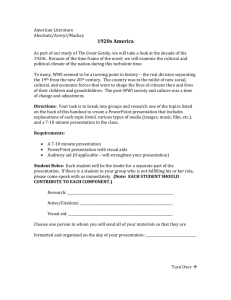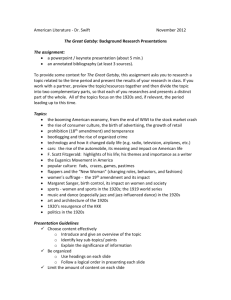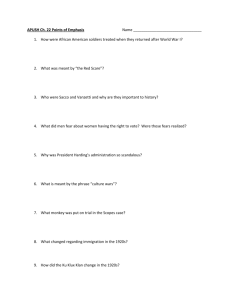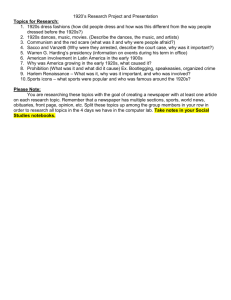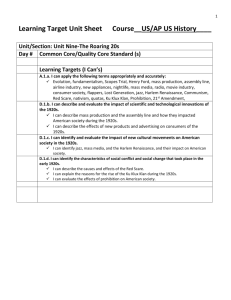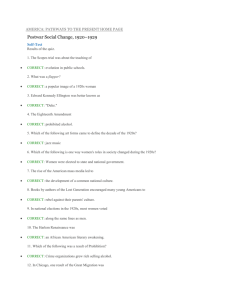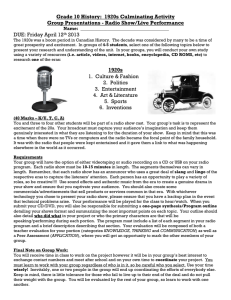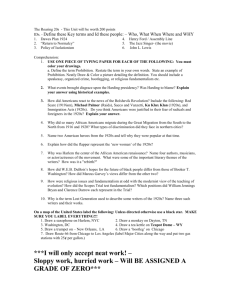23. The Modern Era of the 1920s Millay Quote, Main point/s
advertisement
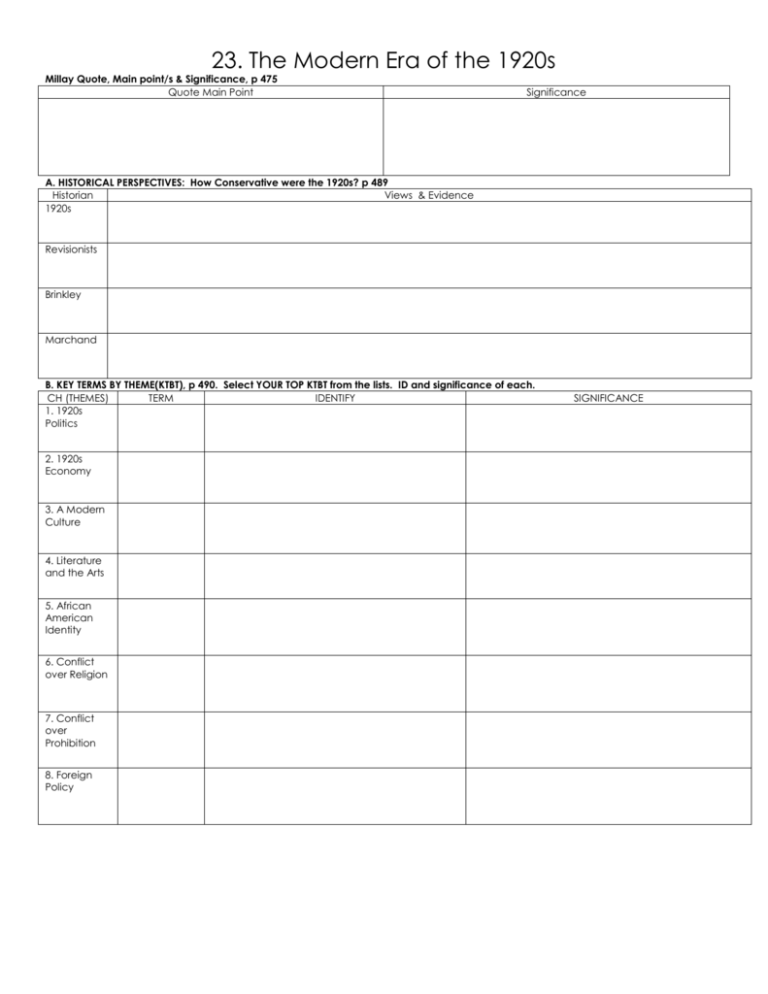
23. The Modern Era of the 1920s Millay Quote, Main point/s & Significance, p 475 Quote Main Point Significance A. HISTORICAL PERSPECTIVES: How Conservative were the 1920s? p 489 Historian Views & Evidence 1920s Revisionists Brinkley Marchand B. KEY TERMS BY THEME(KTBT), p 490. Select YOUR TOP KTBT from the lists. ID and significance of each. CH (THEMES) TERM IDENTIFY 1. 1920s Politics 2. 1920s Economy 3. A Modern Culture 4. Literature and the Arts 5. African American Identity 6. Conflict over Religion 7. Conflict over Prohibition 8. Foreign Policy SIGNIFICANCE C. Multiple-Choice Questions, p 491-3 Question & Letter Answer 1. Which of the following most directly supports the argument found in the excerpt? Response Answer Document Significance Doc. 1-3 2.Which of the following cites an event that mostly clearly challenges the interpretation expressed in the excerpt? 3. The administration of which of the following presidents who served between 1865 and 1900 most closely resembles the corruption of the Harding administration? 4. Which of the following trends of the 1920s is most clearly portrayed in this advertisement? Doc. 4-6 5. Many historians criticize the economy that developed during the 1920s. Which of the following statements best supports that point of view? 6. Which of the following groups faced the most difficult economic conditions during the 1920s? 7. Which of the following developments in the 1920s would most directly support the author’s sentiments in the excerpt? Doc. 6-7 8. Which of the following most influenced thinking about sexual behavior during the 1920s? D. Short Answer. Bullet point answer. Use KTBT whenever possible in responses. Highlight ALL KTBT terms in response. P. 494-6 1a. Briefly explain ONE way the Harlem Renaissance supported the point of view in the excerpt. 1b. Briefly explain ONE example of an African American artist’s achievement from the era that would support this excerpt. 1c. Briefly explain what the author most likely meant by “the very core of prejudice” faced by African Americans in the 1920s. 2. Answer a, b, c 2a. Briefly explain ONE example of how religion and science were a source of conflict in American society during the 1920s. 2b. Briefly explain ONE development during the 1920s that changed attitudes toward Prohibition. 2c. Briefly explain ONE important difference in the immigrant legislation of the 1920s in comparison to earlier periods. 3. Answer a, b, c 3a. Briefly explain ONE example of how the media of the 1920s contributed to development of a shared national culture. 3b. Briefly explain ONE development that caused the disillusionment among writers of the 1920s. 3c. Briefly explain ONE important artistic response during the 1920s and 1930s to industrial development or urban experience. 4. Using the excerpts answer a, b, c 4a. Briefly explain ONE social development in the 1920s that supports the Fitzgerald quote. 4b. Briefly explain ONE economic development of the 1920s that supports the Leuchtenburg argument. 4c. Briefly explain ONE argument that supports that the 1920s made a positive contribution to the long-term prosperity of the United States. Thinking as a Historian: Adding details for contextualization. Which 3 sentences best demonstrate the use of contextualization?
